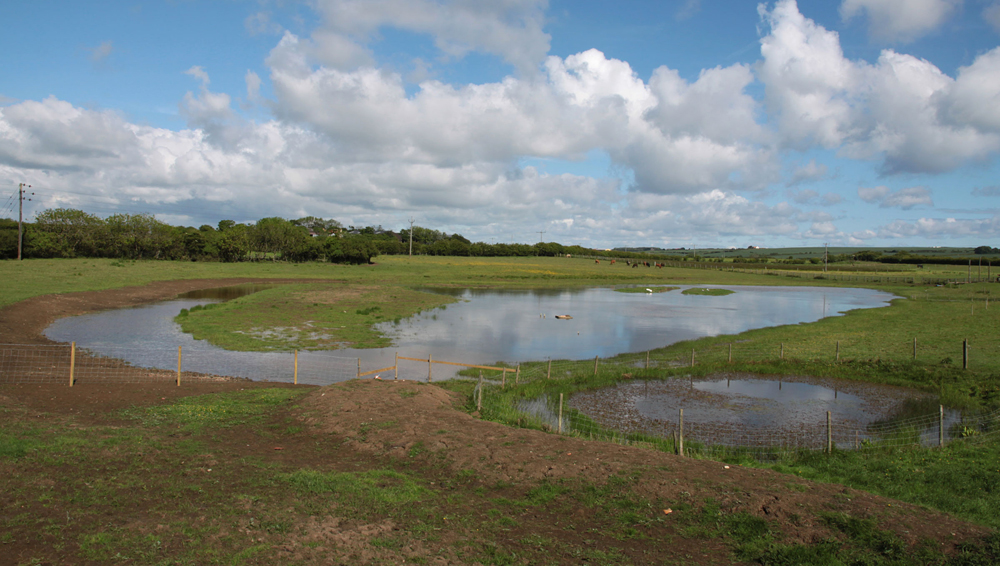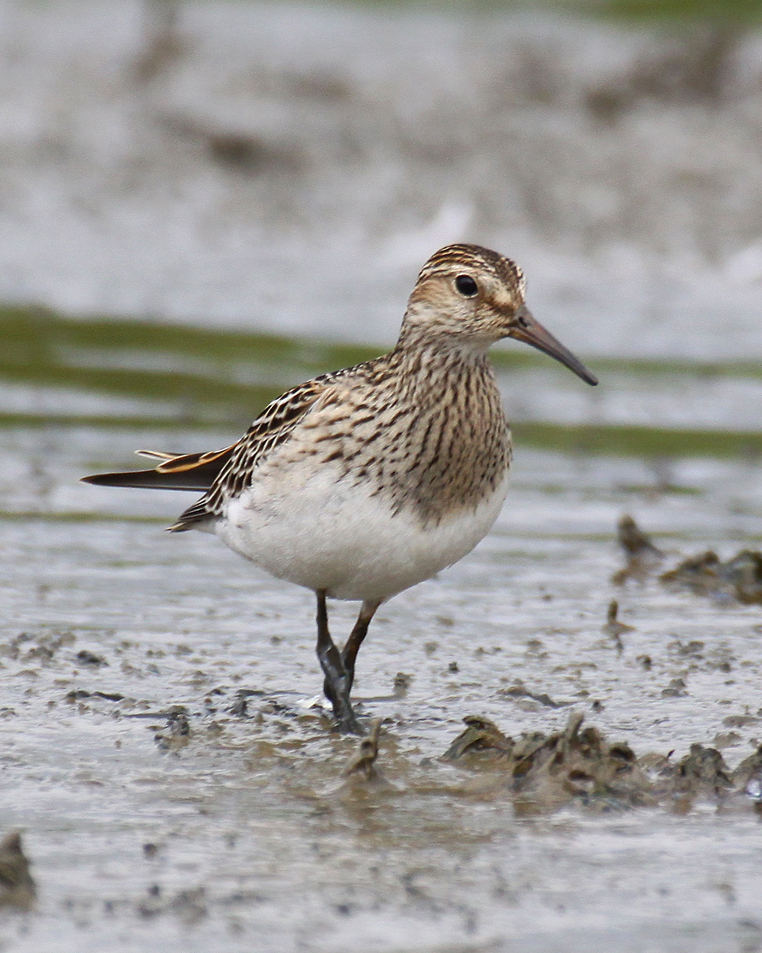
East Lea, spring 2013 – a work-in-progress (c Ian Robinson)
Overview:
East Lea is a small, tranquil wetland reserve just beyond the north-western edge of the town. Although autonomous since their creation in 2003, the reserve’s pasture and pools are closely linked to Filey Dams nature reserve (and it’s doubtful if birds using them can see the join!). Originally a mitigation site for the neighbouring Pastures development providing a sanctuary for displaced newts, the reserve is equally important for birds and other wildlife; the recently re-landscaped pool now features a shallow, muddy fringe for waders and several bespoke islands for breeding species. A new Hide was recently installed in 2023.

Pectoral Sandpiper, Sept 2009 (c Ian Robinson)
The detail:
The site is popular with feeding ducks (particularly Wigeon and Teal in winter) and has an increasingly impressive attraction to waders and other waterbirds. Rarer visitors in recent years include Black-winged Stilt, Glossy Ibis, Pectoral Sandpiper and Red-necked Grebe.
East Lea is owned freehold by FBOG, and both here and Filey Dams are managed by the group for the benefit of birds, mammals, amphibians and plants. For practical purposes both sites are managed together, their connection all too obvious when water released from the former changes the levels of the latter.
Both areas of open water sit in clay-based sumps in the landscape; East Lea is about half a metre above the Dams and as the ability to regulate the water level at East Lea is key to attracting birds, in particular migrant waders. An ambitious plan to link the pools by drainage pipe was conceived and executed in December 2012.
Peaty layers streaked the clay and two large blackened tree trunks were exposed. These may be ‘bog oaks’, preserved in anaerobic conditions, possibly for hundreds of years. A new pipe and simple sluice system were installed and the ditch (at one point three metres deep) was filled in. New islands were created, which disappear under the rising water levels each winter.
Seasonal highlights:
Spring (March – May): Local water birds start to nest-build, spring waders including Little Ringed Plovers and sandpipers drop in; scanning the horizon can bring Marsh Harrier, Common Buzzard or Red Kite.

Little Ringed Plover, East Lea (Mark Pearson)
Summer (June – August): Often a quiet time, though a walk past the reedbed will provide close-up Reed Warbler and Reed Bunting and waders become increasingly regular.
Autumn (September – November): A time for migrants: Greenshank, Wood Sandpiper, Ruff and Little Stint are regular, and it’s the time of year for the best chance of a rarity.
Winter (December – February): Ducks and Geese predominate, with Wigeon and Teal flocks calling incessantly and various other species dropping in; geese can include Pink-footed, White-fronted and, occasionally, Bean.
Top tip:
Visit the Dams hides first, East Lea news will filter through to there.
Access and Directions:
The entrance gate for East Lea is on Pasture Crescent, just past the children’s playground, and ten minutes walk from the Dams car park. Unfortunately there is no Wheelchair access. Strictly no dogs. Access is restricted to FBOG key-holders, but public access is arranged during busy birding periods.
Public transport:
Scarborough – Hull buses and trains call at the nearby Filey bus and train stations, a fifteen minute walk away.
Contact:
secretary@fbog.org.uk

Glossy Ibis (with Wigeon), Oct 2011 (c Ian Robinson)

